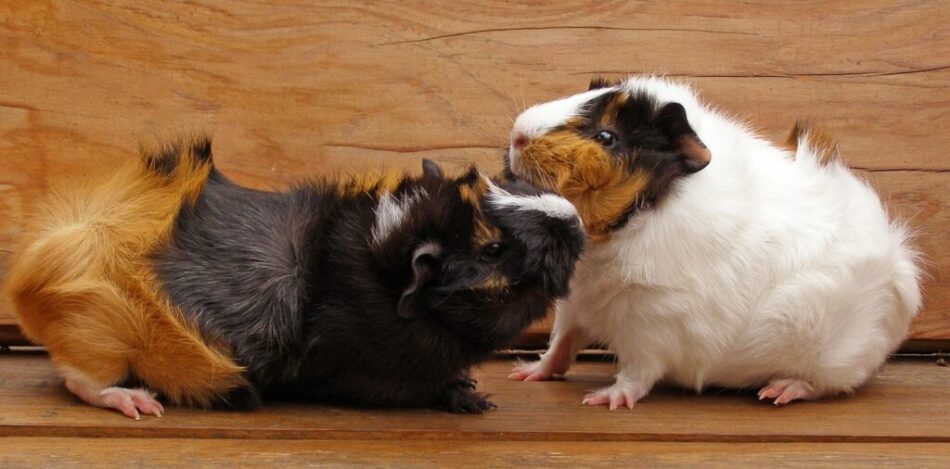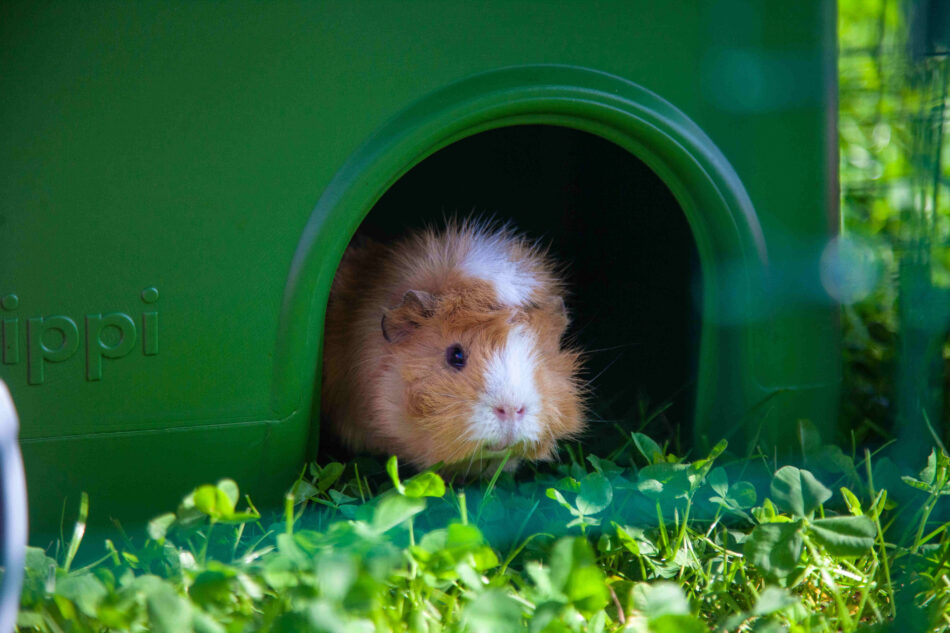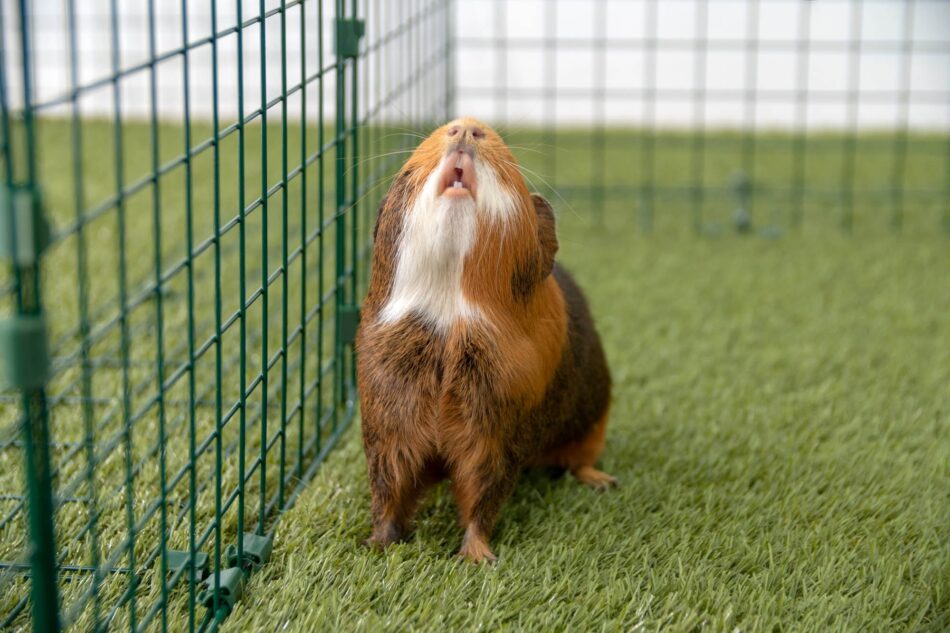How to Understand the Language of Guinea Pigs
Guinea pigs are very popular small pets! Not only are they adorable and cuddly, but are great with children, making them a top pick.
But, it can be initially tricky to get to grips with the behaviours of cavies. However, by using sounds and postures, guinea pigs can say a lot. Though you may not understand all their body language and the noises they make, you can learn to understand what have clear meanings.
Positive sounds – how do you know your guinea pig feels comfortable?
Chutting: AKA “I’m having fun!”. Sometimes referred to as a “clucking” sound, like a mother hen would make, this is a sound of guinea pig contentment. Your cavy may make this sound towards you when you’re interacting with them, or towards their house mates, when enjoying the moment. They may also make this sound when they’re curious and exploring their surroundings.
Cooing: This sound communicates reassurance. It’s a sign of affection that cavies do for humans they love and for their young.
Purring: Guinea Pigs who feel contented and comfortable while being petted or cuddled, will make a deep purring sound, accompanied by a relaxed, calm posture.
Snoring: Yes, you’ve heard right. Guinea pigs can snore as well. If your buddy is relaxing on your lap and snores, it means he feels comfortable. Please note that if your guinea pig begins to make similar sounds to snoring or wheezing/clicking when breathing, be sure to check for any symptoms of illness with your vet.
Wheeking: AKA “Feed me!”. This is a distinctive and common vocalisation made by guinea pigs and it’s most often used to communicate excitement or anticipation of getting some tasty treats when their owner opens the treat box. It sounds like a long and loud squeal or whistle.
Whistling: Guinea Pigs may sometimes whistle without intending to because they are very excited about something.
Negative sounds – how do you know your guinea pig feels uncomfortable?
(Teeth) Chattering: AKA “Stop that!”. This is an aggressive vocalisation and shows an agitated or angry guinea pig which is ready to attack. As the name implies, teeth chattering is often accompanied by the guinea pig showing its teeth, which looks like a yawn.
Purring: If the purr is higher pitched, it’s often an indicator of annoyance and sometimes sounds like a piercing vibration. A short purr may indicate fear or uncertainty and you will notice your guinea pig remain motionless. In both circumstances, it is best to reassure your guinea pig softly.
Hissing: Like chattering, this is a sign of a guinea pig who’s angry or aggressive. It’s just like the hissing noise that a cat makes.
Shrieking: A piercing, high-pitched squeak called a shriek is a fairly unambiguous call of alarm in terms of fear or pain a guinea pig feels. If you hear this sound, check on your guinea pig to make sure everything is alright and it’s not hurt.
Squealing: You will hear this sound if your furry friends are feeling unhappy or distressed. Usually this sound comes when they’re bullied or bitten by other guinea pigs.
Whining: AKA “I don’t like this.” A whining or moaning type of squeak can communicate annoyance or dislike for something you or another guinea pig is doing.
Chirping: Just like a bird, chirping is perhaps the least understood or heard noise that guinea pigs make. This sound is made when cavies are taken away from their family. A chirping guinea pig may also appear to be in a trancelike state.
Body Language – what are positive postures?
Popcorning: This gesture consists of hopping straight up in the air, sometimes repeatedly, just like popcorn does while it is popping. The usual reason is happiness and excitement. They’re simply having a good time, they become excited, and pop – they are literally jumping for joy! Not all guinea pigs entertain their owners with “popcorning”, but most do. For more information on this, please refer to our previous blog Why Do Guinea Pigs Popcorn?.
Licking: This is a super friendly signal! If your guinea pig is licking you, it is usually a sign of affection, that they’re content and are trying to groom you – it’s possible though that they just like the taste of salt on your skin.
Sprawling out: This is usually a sign that your guinea pig is feeling comfortable and safe with you while relaxing on your lap.
Body language – what are negative postures?
Backing away: If you’re trying to pick up your small friend and they’re backing away from you, this could be a sign that they feels threatened and uncomfortable. Please back away and give your pet some space. It’s important not to forget that guinea pigs are prey animals, so their instinct is to run away if they feel threatened.
Fidgeting or biting while being held: This can often be a sign that your guinea pig just needs to go to the bathroom. On the other side, it can also indicate that your guinea pig feels uncomfortable, stressed or even scared – or is just tired of being held. Either way, try returning your guinea pig to its cage for a bit.
Freezing: If a guinea pig is startled or uncertain about something in its environment, it will stand motionless. Reassurance will release them from their nervous freeze.
Strutting: Moving side to side on stiff legs can be seen as an act of dominance or aggression, often accompanied by teeth chattering.
Tossing head in the air: A guinea pig will toss its head back when it’s getting annoyed being petted as a way of asking you to stop.
Standing on two legs: If your cavy stands on two legs and bares its teeth, it could be a sign that a fight is about to happen among him and his mate(s). To prevent injuries, it may be necessary to intervene here. It is recommended and important to try and prevent this behaviour if you’re introducing other guinea pigs for the first time.
What are neutral sounds & postures?
Mounting: This can be either sexual behaviour (males to females) or behaviour used to show dominance within the guinea pig herd’s social structure, especially between females.
Scent marking: Guinea pigs will rub their chins, cheeks, and hind ends on items they wish to mark as theirs. They may also urinate on things or other mates to show their dominance.
Sniffing: Sniffing is a way to check out what is going on around them and to get to know others. Guinea pigs particularly like to sniff each other around the nose, chin, ears, and back end. Sniffing is a way guinea pig’s explore.
Raising heads: This is usually a sign of dominance when they raise or stretch their heads with their cage mates.
Rumbling: A guinea pig rumble or rumble strutting is deeper than a purring noise. A male guinea pig makes this sound while trying to mate with a female, it is part of their mating ritual and often accompanied with a typical “mating dance”.
Running away from being picked up: Guinea pigs tend to be timid, especially at first. If they’re running away from you it’s not a rejection intrinsically but rather a natural defence mechanism. Just give them a bit of time and patience and they’ll be happy being picked up for cuddles and playtime outside of the cage from time to time.
Yawning: Like raising heads, your guinea pigs could be showing dominance when exposing their teeth to others.
Be sure to take a careful note of your furry friend‘s behaviours and after a while, you‘ll have a better understanding of it. Remember it may take a while for your furball to get used to being handled. Your guinea pig may interact with you differently than the way it does with their mates.
To provide your cavy a happy and healthy life and in order to prevent stress or depression, socialising and playtime are important parts of a guinea pig’s life. If you want to know how to teach your furball some nice tricks, check out our previous blog How to Teach Your Guinea Pigs and Rabbits Tricks.

This entry was posted in Guinea Pigs

